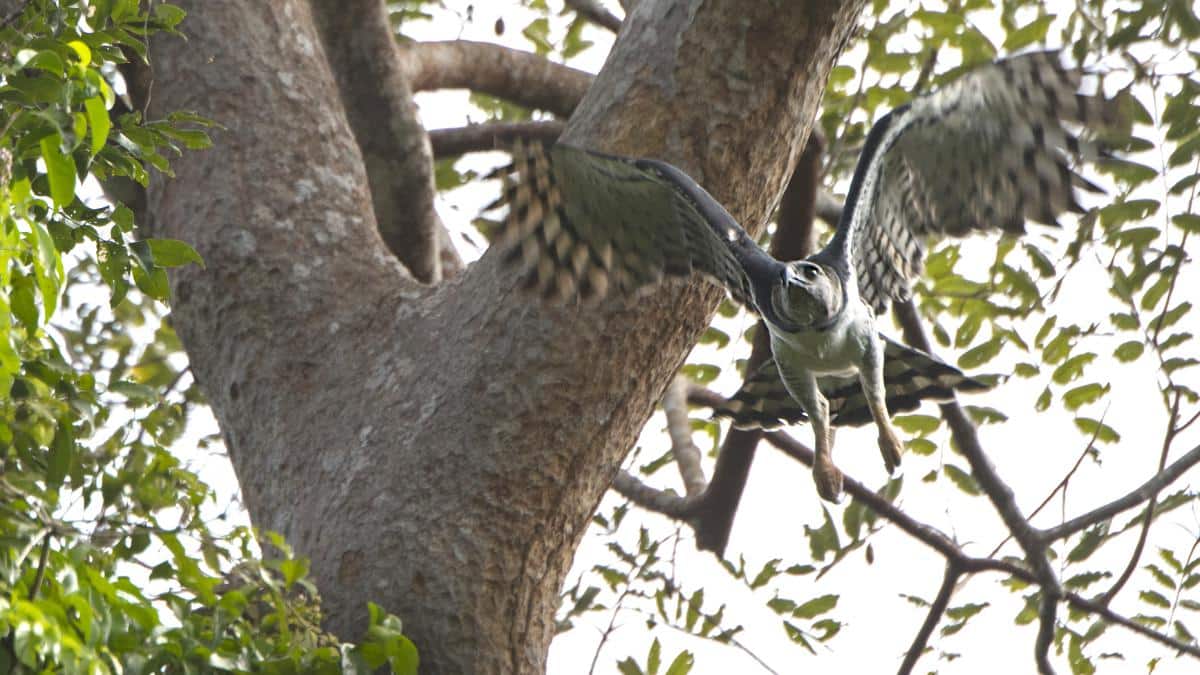

Harpy eagles are the largest eagles in the Americas and one of the largest eagle species in the world, with adult females weighing as much as 22 pounds.
But these massive birds are running out of room and food, a study published in Scientific Reports Wednesday has found.
These apex predators are extremely vulnerable to human activities because they are dependent on a tropical forest ecosystem that is rapidly being cut down.
“Harpy eagles evolved in a forest environment millions of years ago, and this is what they have always known,” study co-author and University of East Anglia conservation biologist Carlos Peres told The Independent.
Harpy eagles’ dependence on tropical forests is partly because of how they hunt, a Scientific Reports press release explained. They feed on animals like sloths and monkeys that thrive in canopy forests. Moreover, they need enough of these prey animals to eat 800 grams (approximately 28 ounces) of food a day, and they need trees at least 40 to 45 meters (approximately 131 to 148 feet) tall to nest in, according to the study.
Unfortunately, their ideal nesting trees are also highly desirable for the logging industry. While their range extends from northern Argentina to Central America, they have disappeared from much of it because of habitat loss and hunting, BBC News reported.
This has enhanced their vulnerability by making them increasingly dependent on an especially menaced forest: the Amazon, which has shrunk by 17 percent over the last 50 years, a process that has sped up in recent years.
“Their global distribution has contracted by 41% since the nineteenth century, and currently, 93% of their distribution range is within Amazonian Forests, their last stronghold,” the study authors wrote.
To understand exactly how Amazon deforestation is impacting the eagles, the researchers conducted the first-ever study on how forest loss affected the raptors’ ability to feed. First, they studied the eagles’ feeding habits by monitoring 16 nests in Mato Grosso in the Brazilian Amazon using cameras and observations of bone fragments around the nests, the press release explained. Then, to assess the rate of deforestation within three to six kilometers (approximately two to four miles) of the nests, they relied on maps and Google Earth.
The eagles fed on a total of 306 prey items, but nearly half of them belonged to one of three canopy species: two-toed sloths, brown capuchin monkeys and grey woolly monkeys. What they found was that, in deforested areas, the eagles did not switch to less tree-dependent animals and instead simply fed less food to their young. In areas where deforestation levels reached 50 to 70 percent, three baby eagles starved to death. In areas suffering from more than 70 percent deforestation, there were no nests at all.
This led to grave conclusions about the future of harpy eagles in a dwindling Amazon. The researchers calculated that the eagles cannot successfully breed young in areas with more than 50 percent deforestation, which is the case for around 35 percent of northern Mato Grosso.
This is a problem for the species because of the birds’ lifecycle and breeding habits: They live to be 54 years old and only rear one eaglet at a time every 30 to 36 months.
“Considering that harpy eagles have the slowest life cycle of all bird species, their chances of adapting to highly deforested landscapes are nearly zero,” Peres told The Independent.
To help the eagles survive, the researchers called for intervention for eagles who end up trapped in pockets of forest surrounded by tree loss.
“These stranded eagles will likely depend on decisive ‘hands-on’ population management interventions, which could include translocation of juveniles and food supplementation to eaglets, if they are to persist,” the study authors concluded.

 233k
233k  41k
41k  Subscribe
Subscribe 